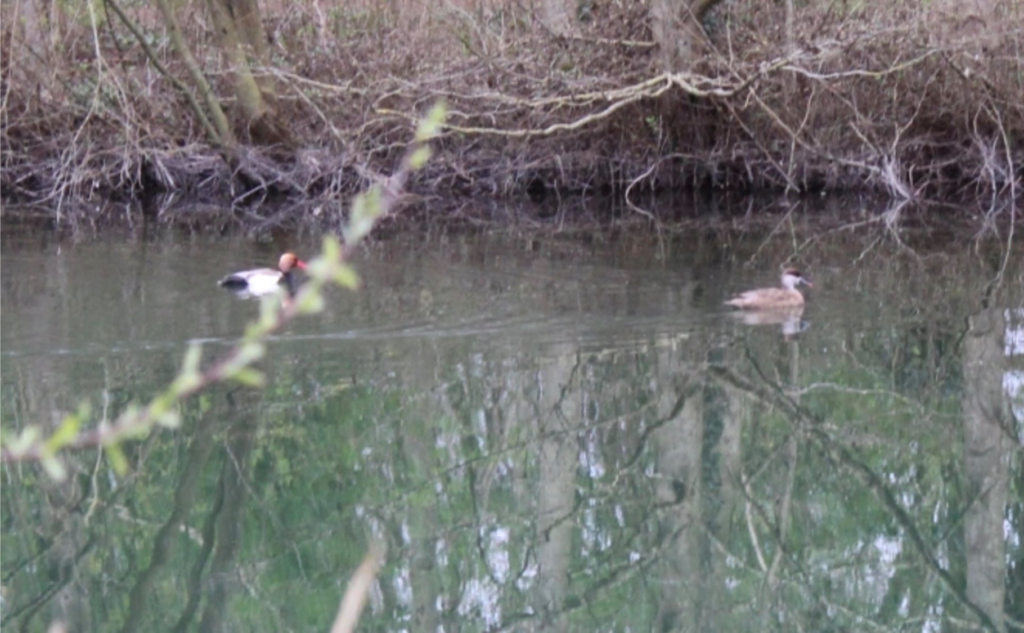Little grebes hatch out …
Two little grebes hatched out last week, from their nest in the willow branches in the NW corner of the Lake … mum watches as they learn to swim.
Two little grebes hatched out last week, from their nest in the willow branches in the NW corner of the Lake … mum watches as they learn to swim.
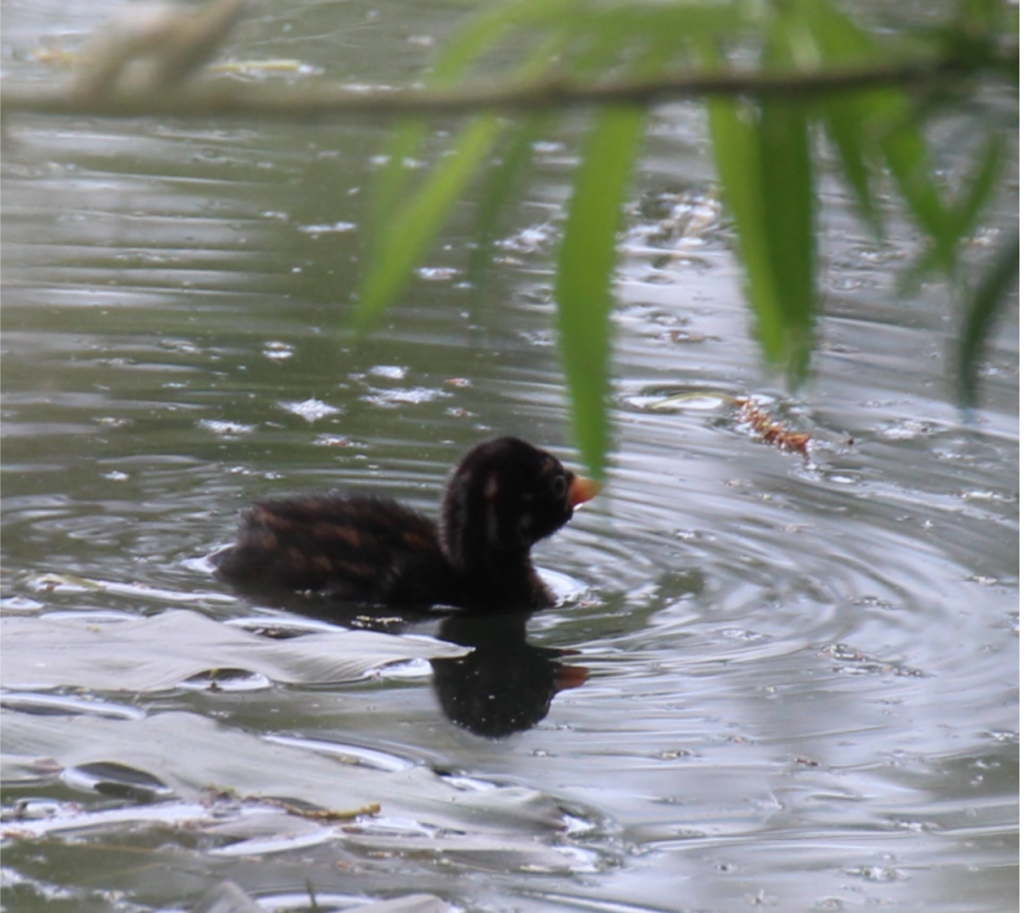
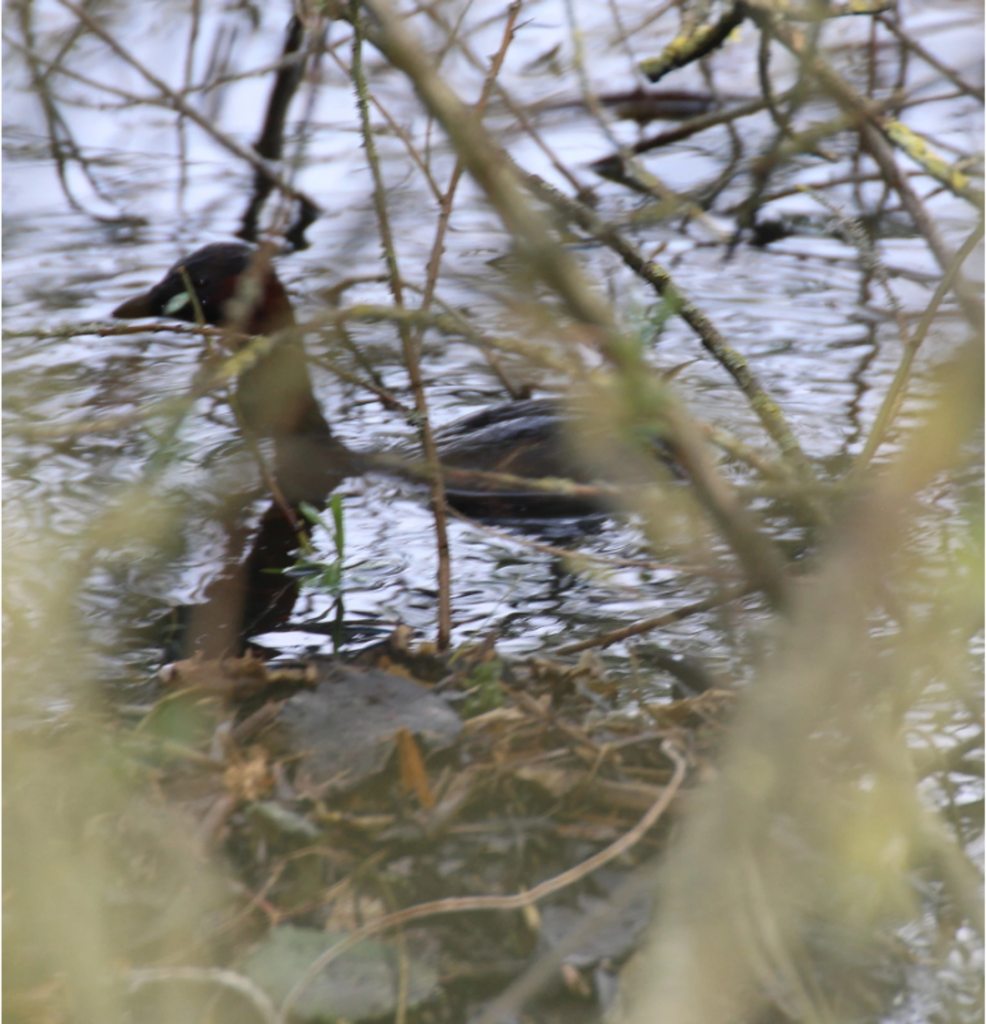
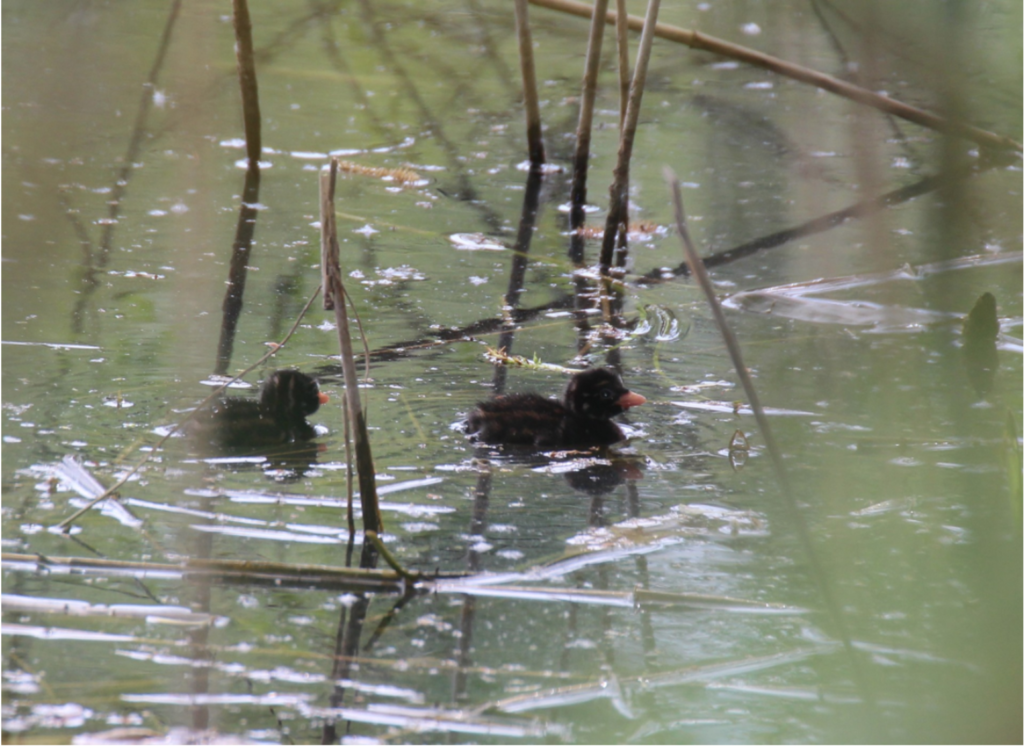
The horsetail (Equisetum) is an ancient genus of plants whose relatives occur as fossils in Carboniferous sedimentary rocks up to 350 million years old. They formed a considerable proportion of the ‘trees’ in the world’s first forests where the giant horsetails grew to between 10 and 30 metres. Today horsetails are generally less than one metre tall.
Horsetails are non-flowering plants, related to ferns. They reproduce in two ways: from spores produced on a fertile cone-like shoot (the strobilus) or from underground branching stems (rhizomes) from which the stems emerge in early spring.
There are two commonly found species: the field (or common) horsetail (Equisetum arvense) and the marsh horsetail (E. palustre). Both are found growing in marshy places – and both are found at the Village Lake. The field horsetail produces a ‘cone’ on a pale, non-photosynthetic stem whilst the marsh horsetail has its ‘cones’ at the tips of the green stems carrying its whorls of branches.
The field horsetail along the western bank (where the orchids are growing) and the marsh horsetail along the northern bank.
Post by Les Jones
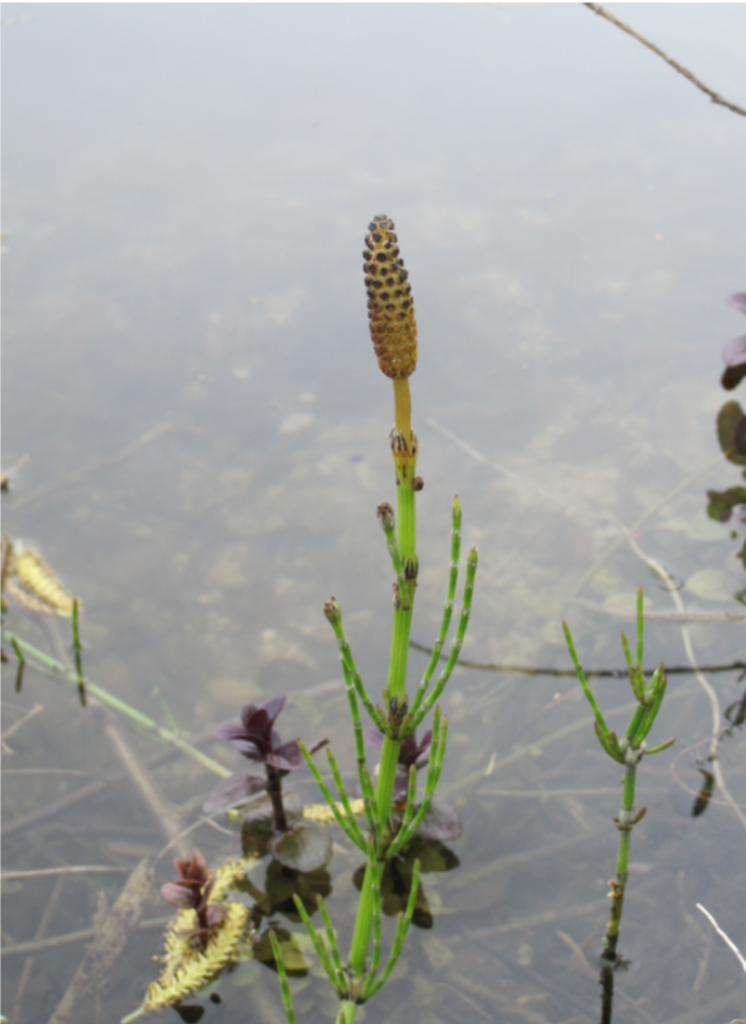
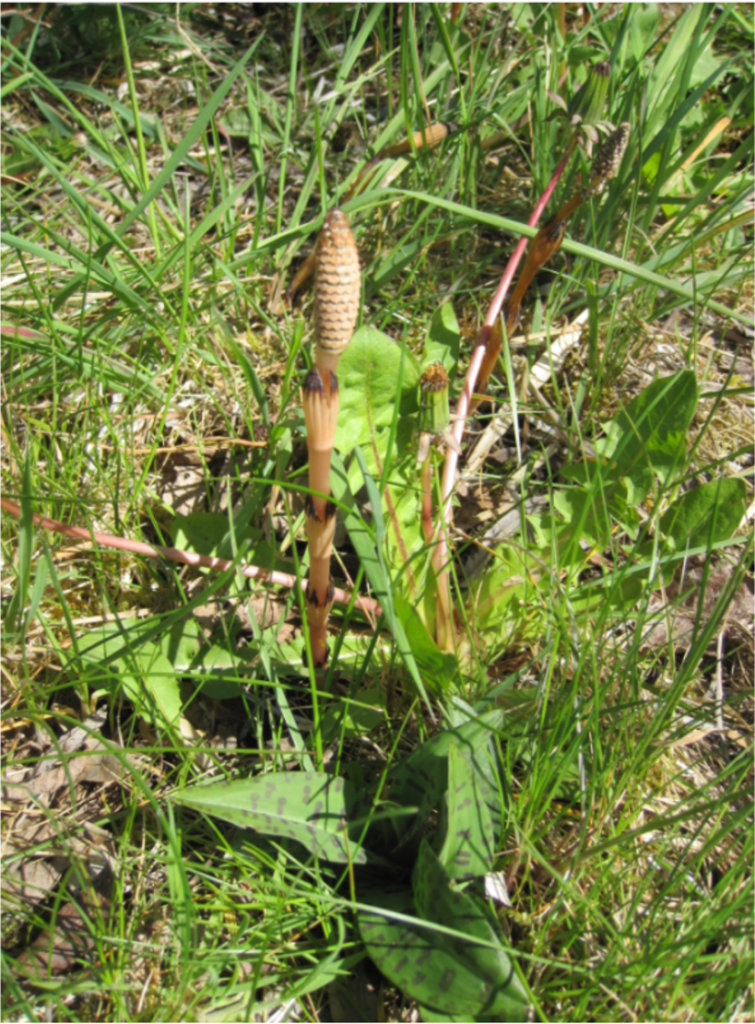
First cuckoo heard over towards Lower Mill, on Thurs 16 April … earlier than last year …. anyone ever managed to get a photo of a cuckoo ….. !!
On the evening of 08/04/20 we put out a motion sensor wildlife camera close to the board walk and were delighted to find that a pair of Otters had visited during the night!! The Eurasian otter is the only otter species to inhabit Europe and Is found in most areas of England and Wales. Otter territories are large and can cover up to 40km, with habitats including watercourses, dense vegetation and woodland areas. (source Canal & Rivers Trust)
Thank you to everyone who has taken the time to write what they have seen at the lake on the whiteboard. Don’t forget to bring your own whiteboard marker!

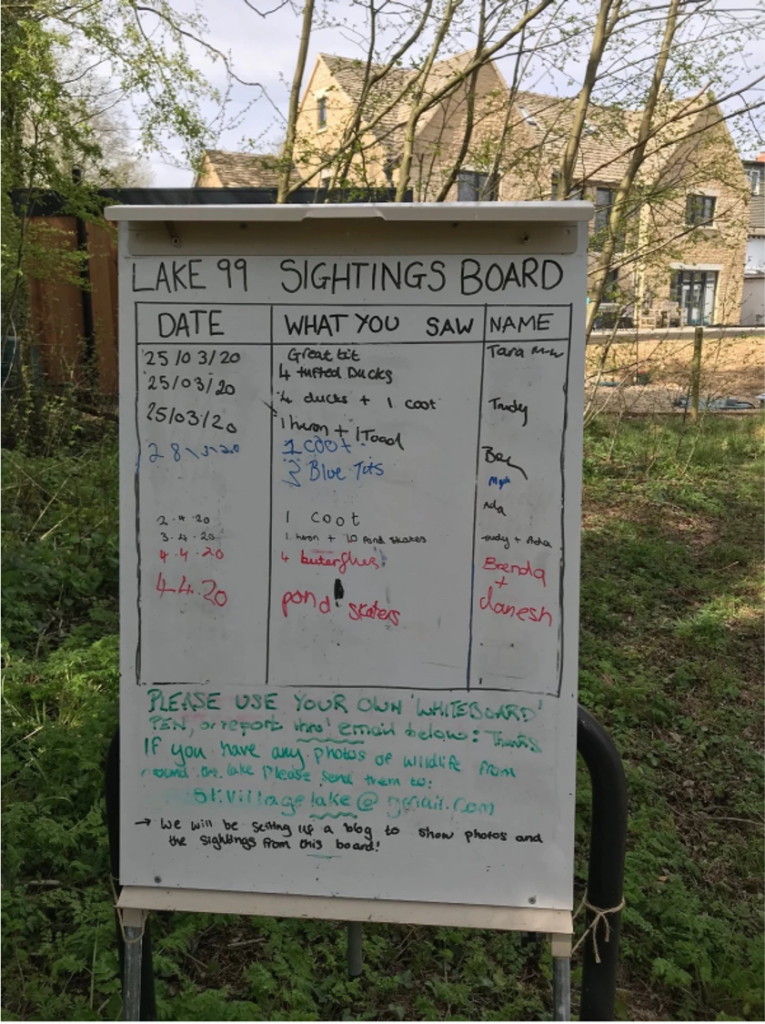
A pair of Red-Crested Pochards were spotted on 01/04/20 at around 6:15pm! If you have any photos you would like us to share please email them to us!
